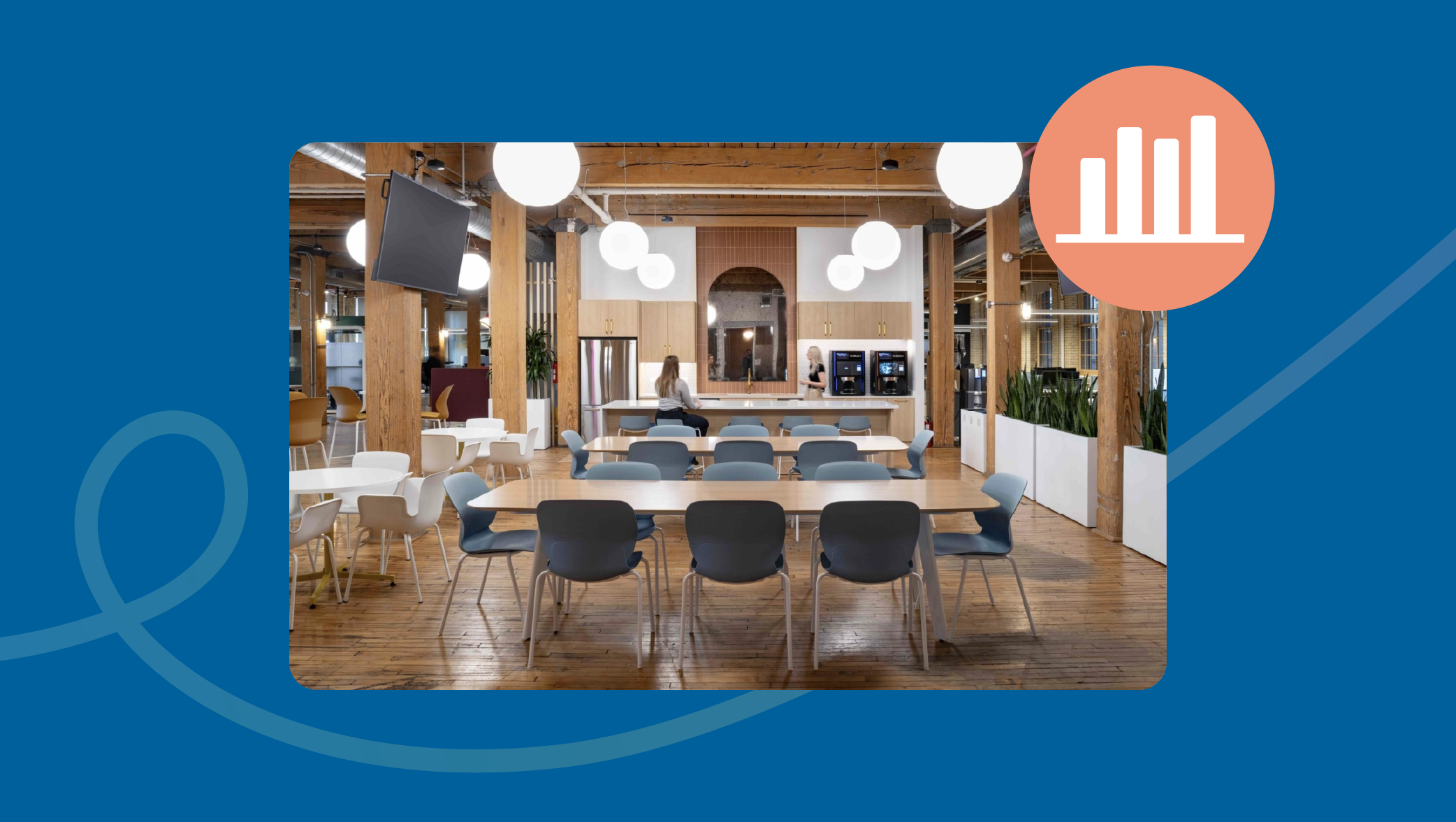For 25 years, I've watched the shift from legacy software to cloud-first platforms, from guesswork to data-driven precision.
And now, we're in the middle of another revolution: the reinvention of the workplace.
The old office model—long-term leases, static seating charts, and rigid attendance policies—is obsolete. Mandates aren't bringing people back meaningfully; companies are burning cash on underutilized space. The solution? Smarter, AI-driven workplace strategy
If your organization still relies on outdated office setups, it's time to rethink. Learn how leading companies use AI to transform their workspace strategies and make smarter decisions.
The RTO fantasy vs. reality.
Executives mandated it. Employees begrudgingly swiped their badges. The lights flickered back on.
And yet, return-to-office mandates have flopped.
Office buildings remain half-empty. Occupancy levels are stagnant. CFOs are stuck with office footprints that no longer reflect how work actually happens.
Most companies still rely on badge swipes to measure office utilization.
But let's be real—that data is flawed:
- Employees show up, sip a coffee, sit through a meeting, and leave.
- Others pop in sporadically just to be seen (hello, performative attendance!).
- Even on "busiest" days, buildings remain 50%+ underutilized.
On paper, it looks like the office is buzzing. In reality? It's a mirage.
The real cost of rigid RTO policies.
Top-down mandates aren't just ineffective—they're financially reckless. Here's what's at stake:
- Wasted real estate spend – Companies are locked into expensive leases based on outdated pre-pandemic assumptions.
- Employee disengagement – Forcing people into spaces that don't support their work breeds resentment, not productivity.
- Inefficient office space planning – CRE teams are making billion-dollar decisions based on gut instinct instead of real utilization data.
AI-driven workplace strategy: the smarter play.
Instead of forcing outdated office norms, leading companies are using AI to align their office footprint with how people actually work. Portfolio Manager AI helps enterprises make smarter, data-backed workplace decisions.
Here's how it transforms workplace strategy:
- AI-powered space utilization insights.
Companies can't afford to rely on bad data. AI-powered analytics go beyond badge swipes to track real employee behavior:
- Who is actually using the space? Not just who books, but how long they stay, where they sit, and whether they're working solo or in teams.
- How is space being used? Are people working together or solo? Are conference rooms booked?
- What spaces are wasted? Identify ghost offices—locations that can be downsized or eliminated without impacting productivity.
- Who is actually using the space? Not just who books, but how long they stay, where they sit, and whether they're working solo or in teams.
- Dynamic workplace scenario modeling.
Planning real estate like it's 2019 is a losing strategy. AI enables companies to test multiple workplace scenarios before making costly lease commitments:
- What happens if we cut 20% of our footprint? Will employees still have access to the spaces they need?
- Where should we invest in satellite offices? AI analyzes commute patterns and usage trends to guide expansion.
- How does hybrid impact office demand? Smart modeling ensures companies optimize space for flexible workstyles.
- What happens if we cut 20% of our footprint? Will employees still have access to the spaces they need?
- Real-time portfolio optimization.
Instead of setting real estate plans in stone, AI continuously refines strategy based on live data:
- Predict demand surges – Know when office usage will spike so companies can scale space accordingly.
- Dynamically adjust capacity – Scale workspace up or down in real time to prevent bottlenecks or excess costs.
- Optimize costs without harming productivity – Cut waste while ensuring employees have the right mix of spaces to do their best work.
- Predict demand surges – Know when office usage will spike so companies can scale space accordingly.
- The Hybrid Dividend: saving costs, boosting engagement.
The best workplaces aren't just smaller—they're smarter. AI-driven workplace strategy delivers a two-part dividend:
- The Place Dividend
Enterprises that optimize their footprint with AI see real estate cost reductions of 80% or more. - The People Dividend
When employees have access to the right spaces, at the right times, for the right work, they're more engaged and productive.
- The Place Dividend
The future is adaptive, AI-driven, and employee-centric.
The best offices of the future won't be judged by square footage. The best offices of the future won't be judged by square footage. They'll be judged by their impact—on business performance, talent retention, and cost efficiency.
If you're ready to rethink your RTO strategy, start with insights from those who have made it work. 👉 Download: RTO: making it work.
Ready to put AI to work in your office strategy? Let's explore the possibilities. Talk with a workplace planning expert.





